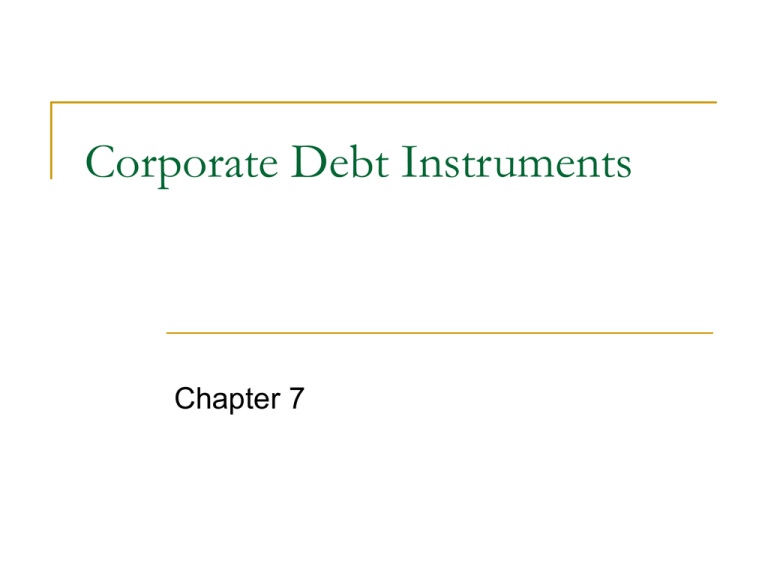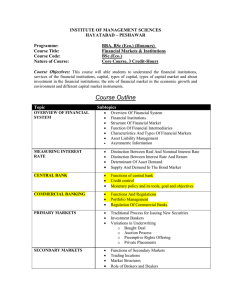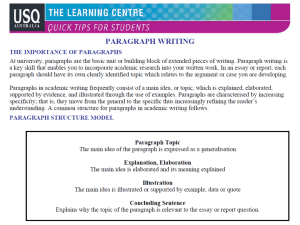Chapter 7 overheads
advertisement

Corporate Debt Instruments Chapter 7 Corporate Bonds classified by type of issuer public utilities transportations banks/finance industrials Features indentures term bonds notes bonds serial bonds Corporate Bonds Features security private placement provisions collateral debenture bonds guaranteed bonds callable refunding sinking fund ratings Moody's S&P Fitch Brief Definition Investment Grade: High Credit Worthiness Aaa AAA AAA Gilt edge, prime, maximum safety Aa1 AA+ AA+ Aa2 AA AA Very high grade, high quality Aa3 AA– AA– A1 A+ A+ A2 A A Upper medium grade A3 A– A– Baa1 BBB+ BBB+ Baa2 BBB BBB Lower medium grade Baa3 BBB2 BBB2 Distinctly Speculative: Low Creditworthiness Ba1 BB+ BB+ Ba2 BB BB Low grade, speculative Ba3 BB– BB– B1 B+ B+ B2 B B Highly speculative B3 B– B–2 Predominantly Speculative: Substantial Risk or in Default CCC+ Caa CCC CCC Substantial risk, in poor standing CCC– Ca CC CC May be in default, extremely speculative C C C Even more speculative than those above CI CI = Income bonds; no interest is being paid DDD Default DD D D High Yield Bonds original issue high yield bonds downgraded to high yield fallen angels issues in which issuers have significantly increased debt load for LBO or recap. deferred coupon structure deferred interest bonds step up bonds payment in kind bonds Medium-Term Notes notes offered continuously to investors by agent of issuer variety of maturities shelf registration primary market best-efforts basis small amts on intermittent basis agents – 2 to 4 IB firms rate schedule as spread over Treasuries Commercial Paper ST unsecured note issued in open market short term funding for seasonal and working capital needs maturities range from 1 to 270 days rollover risk ratings investment vs. noninvestment grade LOC paper directly placed vs. dealer placed paper Tier 1 and Tier 2 paper sold at discount to par






